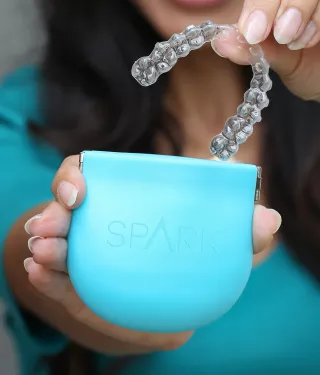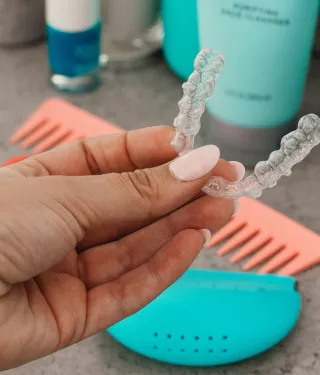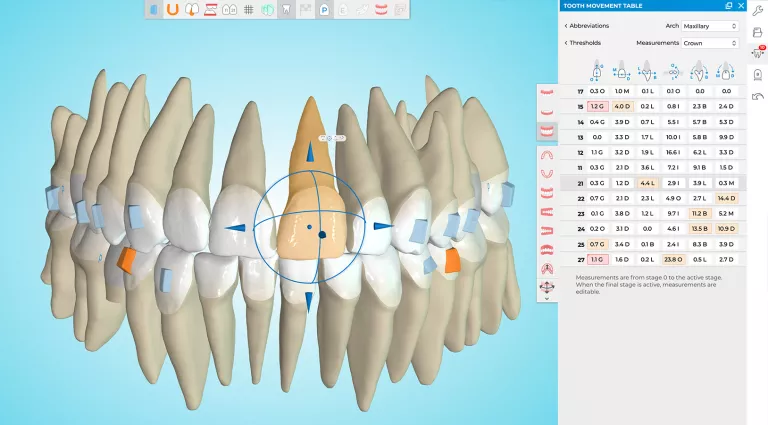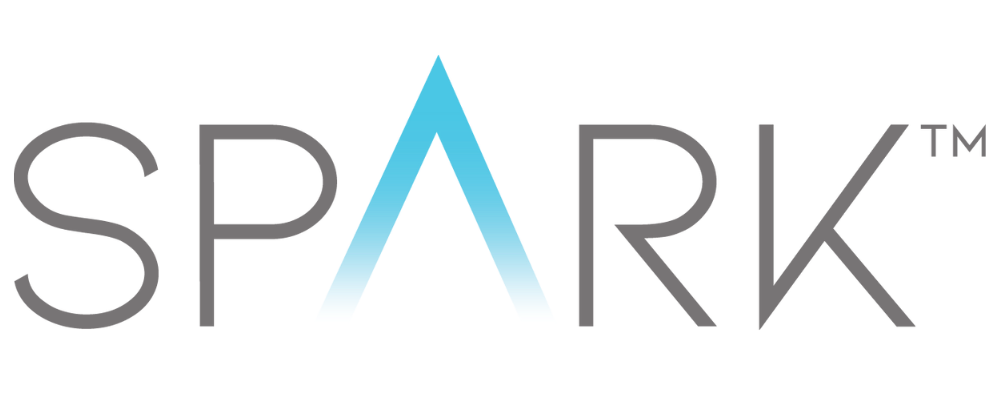How Clear
Aligners Are
Different Than Braces

Braces vs. Aligners
My name is Dr. Trevor Nichols. I’m an orthodontic specialist, practice owner, speaker, and educator in Mesa, Arizona. I have treated thousands of cases using the Damon system and have been influential in Spark Aligner (treatment using clear trays) system development and progression. I have had great experience with clear aligners, and I’m currently treating many Spark cases, including aligner treatment using skeletal anchors and other unique modalities.
I am so excited to discuss the benefits of clear aligner treatment in today’s world and how Spark has made a difference for our patients and transformed their lives. Learn about the differences I’ve found in braces vs. aligners treatment today!
Why Orthodontics is Important
Orthodontic treatment is extremely rewarding. There is no comparison to the excitement of tooth movement progression and the joy of obtaining an amazing result. It’s important to note that orthodontics is not just about aesthetics. Orthodontics is about more than just straightening teeth; it involves many complex biological processes to obtain the best position of the teeth to maintain a healthy bite while preserving ligaments, bone, and tissue and ensuring that these will remain healthy over a lifetime.
Ultimately, our job as orthodontists is to provide a life-changing event. We strive to utilize technology, knowledge of tooth movement, and artistry to create a healthy, life-lasting, beautiful smile that radiates from ear to ear. Orthodontists are dentists who specialize in tooth movement through an advanced and competitive residency program that lasts an additional 2-3 years after completion of dental school.
How Orthodontists Can Help
The American Association of Orthodontics conducted a study that showed approximately 30% of orthodontic patients are adults (AAO Economics of Orthodontics). This study also showed that 92% of these patients said they would recommend treatment to their adult friends and family as they found new self-confidence and improvements in career and personal relationships due to orthodontic treatment.
We know that in practice, the number of orthodontic adult patients is continuing to grow. This demand reflects the increase in technology and aesthetics in orthodontics, with a large percentage of these patients being treated by clear aligner systems. The demand for improved treatment aesthetics, comfort, treatment duration, and cost has never been more important.
Through my experience treating patients using braces vs. aligners, I have found that many do not understand how clear trays work or the differences between braces and aligners.
How Clear Aligners Work — Braces vs. Aligners
The basics of treatment using trays is that first, a qualified orthodontic specialist establishes a customized diagnosis and treatment plan based on the needs and desires of the patient, clinical examination, photos, and radiographs. Second, additional records are taken of the teeth themselves using impressions or computerized intraoral scanning devices. These records are then digitized.

The orthodontist takes all the records and plans out the movement and final position of each tooth with the help of a computer system. Once the movement and sequence are finalized, models of each stage are printed by a laboratory. The trays are then fabricated from the staged models and bagged and labeled.
When the orthodontic office receives the models, we invite the patient in for an appointment to try and deliver the trays. The basic process of wearing aligners includes:
- Wearing the aligners for 20-22 hours per day
- Changing trays on a weekly or biweekly basis
- Taking the trays out for eating, drinking, and cleaning
- Checkups to ensure treatment is on track
How Braces Work
When comparing braces vs. aligners, orthodontic treatment for braces is much different. After a diagnosis and treatment planning, the orthodontist and his team place the braces on each tooth by hand. After the braces are placed, wires are engaged into the designated slot in each bracket. Initial wires are very small and flexible, but we increase wire sizes and adjust their positioning to accomplish smaller tooth movement at subsequent visits.
Differences Between Braces & Aligners
Clear aligner treatment, earlier known as “tooth positioners,” dates back to the 1940s. These appliances were made of rubber to make final corrections after treatment with braces. Clear aligners, as an alternative to braces, began in the mid-1990s. Since then, 3D technology has improved, and we’ve made great strides to treat some truly amazing cases. Spark, in particular, is a type of aligner system that includes the latest and greatest in aesthetics, comfort, and tooth movement.
Today, clear aligners are still removable trays that can shift teeth to better positions in the mouth. Because they’re easier to clean, manage, and incorporate into daily life, they have many advantages over braces.
Braces vs. Aligners | Which Are Better?
Most patients that are interested in transforming their smile approach an orthodontic specialist with specific questions. In a smile-transformation consultation, a common question that I get is, “which is better, braces vs. aligners?” My response is that it depends on the case. There are several clear advantages to straightening teeth without braces, using clear aligners. Ultimately, patients should seek out an orthodontist to determine what type of treatment is best for their case.
If you’re considering the benefits of each treatment type, explore this quick breakdown of the differences between braces and aligners.
- Aesthetics
The first clear advantage of aligner treatment vs. braces is aesthetics. Many patients are apprehensive about transforming their teeth because they don’t want metal pieces or wires ruining their smile. They want something effective at straightening teeth without marring their mouth. It is our task as orthodontists to provide an attractive option that will also provide them with a fantastic result.
It has been my experience that Spark is the most subtle visual option that provides the most effective and efficient result. Using clear trays that you change every week provides patients with an option of nearly invisible treatment and reduces the barrier of metal brackets and wires to achieve the smile of their dreams without the braces look.
- Comfort
The next advantage to using aligners vs. braces is that they can be much more comfortable. Rather than having the potential of wires poking and brackets rubbing on cheeks and gums, the clear trays provide a treatment option that is much more comfortable for the patient. Eating and chewing can be troublesome with brackets and wires, and the ability to remove your aligners for meals is a huge advantage. It’s one of the biggest differences between braces and aligners!
- Flexibility Through Technology

Another difference between braces and clear aligners is the ability to plan a case digitally using the most innovative technologies. This advance in tech allows doctors to plan treatments more efficiently and easily. Using Spark software, we can plan each tooth movement using science and mathematics that we show and share with the patient before they even start treatment. When considering aligners vs. braces, more transparency gives patients the confidence they need to move forward.
- Efficient Movement Means Faster Results
Another advantage of using clear aligners vs. braces is the efficiency of movement. One of the principles of orthodontic tooth movement is light and continuous forces. Because clear aligners are more comfortable than braces, people don’t mind wearing them for long periods of time to ensure continuous pressure on their teeth. Furthermore, in most cases, patients know their exact finish date — who doesn’t love that?
- Fewer Visits to the Office
In my practice, treatment utilizing aligners vs. braces also allows patients decreased visits to the orthodontic office. Patients don’t have to find time in their schedule to make an appointment for adjustments! They just pop in a new tray as their treatment plan dictates. With busy lifestyles and demanding careers, many patients truly appreciate that they don’t need to visit the office every month.
- Affordable Treatment Options
The cost of treatment is a huge factor in choosing braces vs. aligners. Thankfully, using clear trays, specifically the Spark system, there are different levels of treatment based on a patient’s financial needs and desires. Patients get a flexible payment system and affordability for all.
- Cleanliness & Maintenance
As an orthodontist, I am concerned with my patient’s ability to maintain optimal hygiene during treatment. Having metal braces, elastic chains, wires, and more can trap bacteria and food, making hygiene more difficult. Undergoing treatment with aligners vs. braces allows patients to remove the trays to eat, drink, floss, brush, and continue great hygiene practices much more easily.
You Have Options
Before undergoing any type of orthodontic treatment, you should consider seeking a qualified orthodontist. Patients should also understand that they have options when it comes to their treatment. If your provider recommends clear aligners, you should understand that you always have a choice in the brand of the aligner. Each brand has some small differences that can have a significant impact on your case result.
Ultimately, having options is important to all orthodontists and patients. Clear aligners vs. braces provide patients with an alternative to brackets and wires that might better suit their needs and desires. In addition, Spark Clear Aligners offer an alternative to getting straight teeth and a beautiful smile without braces or Invisalign™.
Finding a Qualified Provider
If you are considering orthodontic treatment, I encourage you to see your local orthodontist and inquire about Spark Aligners. They can answer additional questions and provide a comprehensive comparison covering the differences between braces and aligners for your specific case.
I often recommend the Spark Aligner System for my patients because it offers the best in comfort, reliability, efficiency, and results. In our practice, patients have been overwhelmingly happy with the Spark Aligners system. I encourage you to ask your provider about Spark Aligners and how they can help you!



